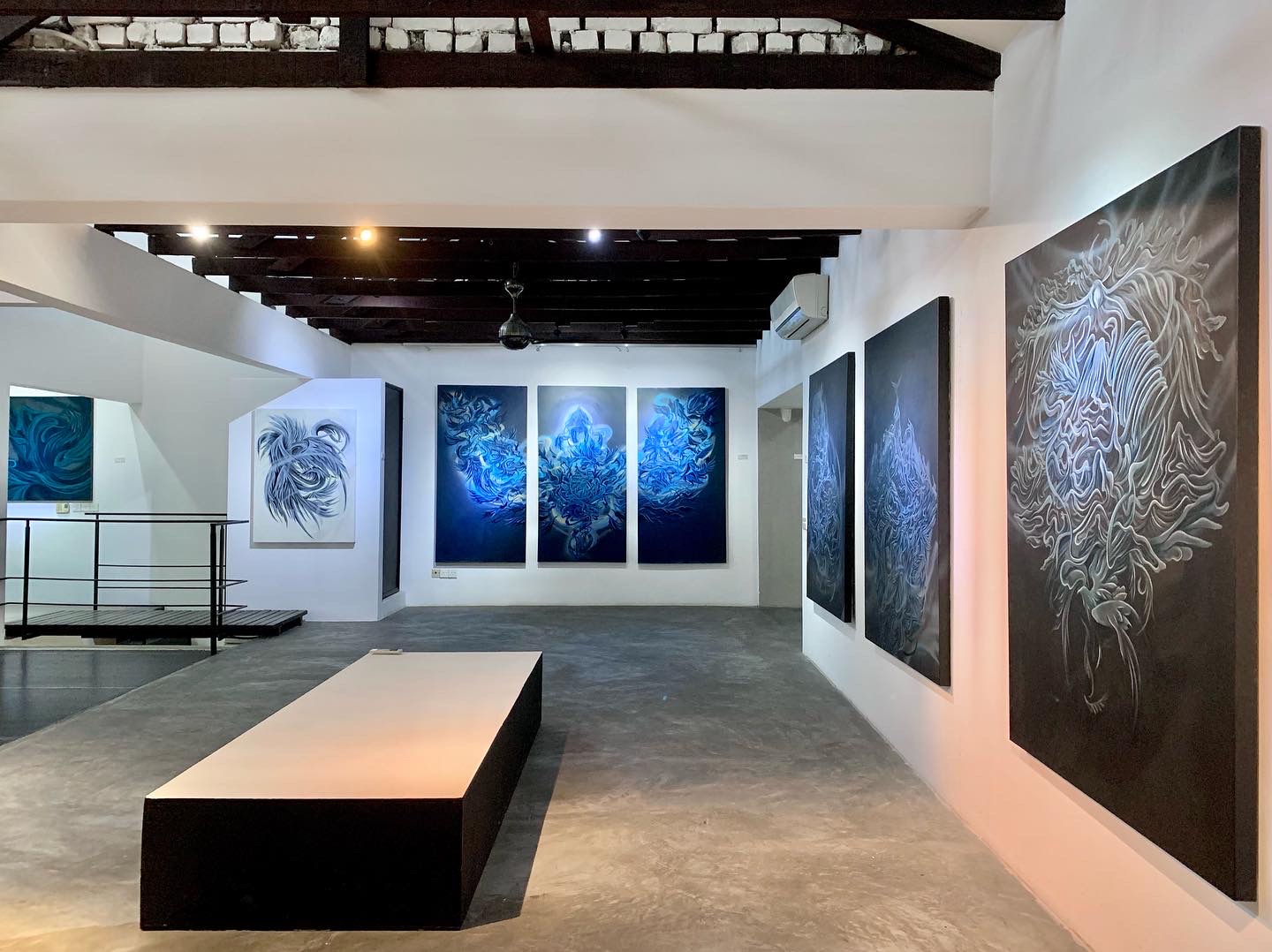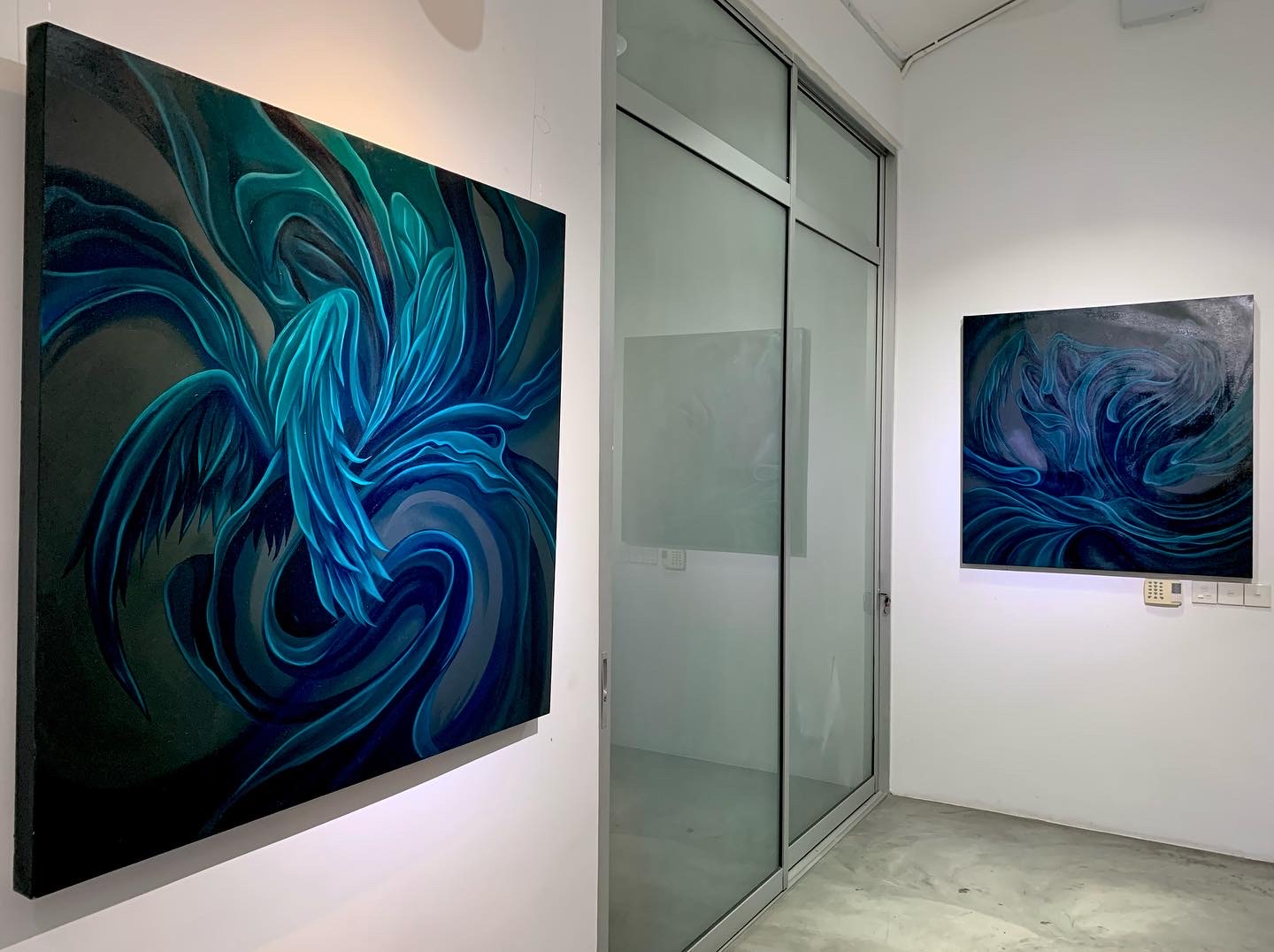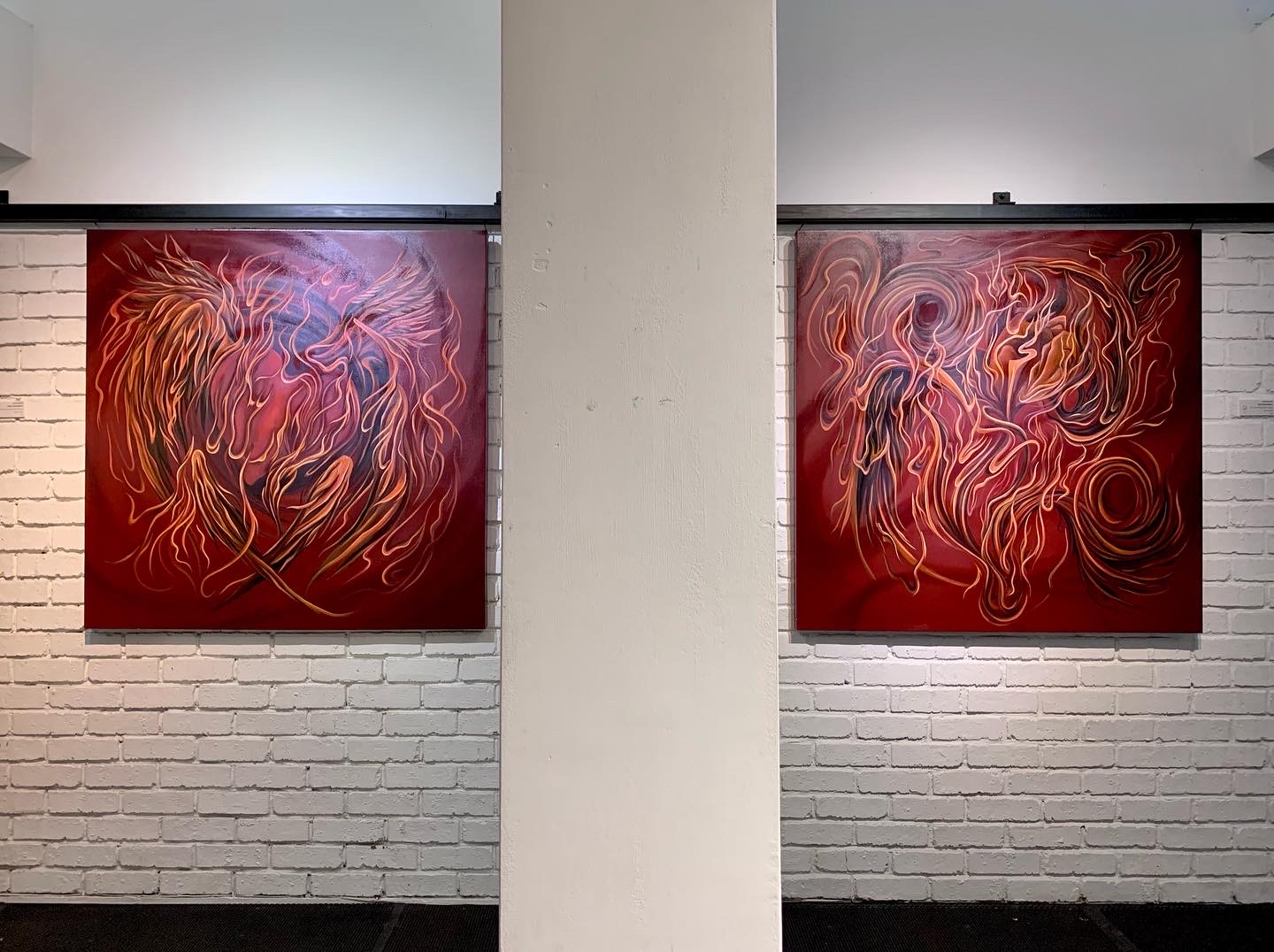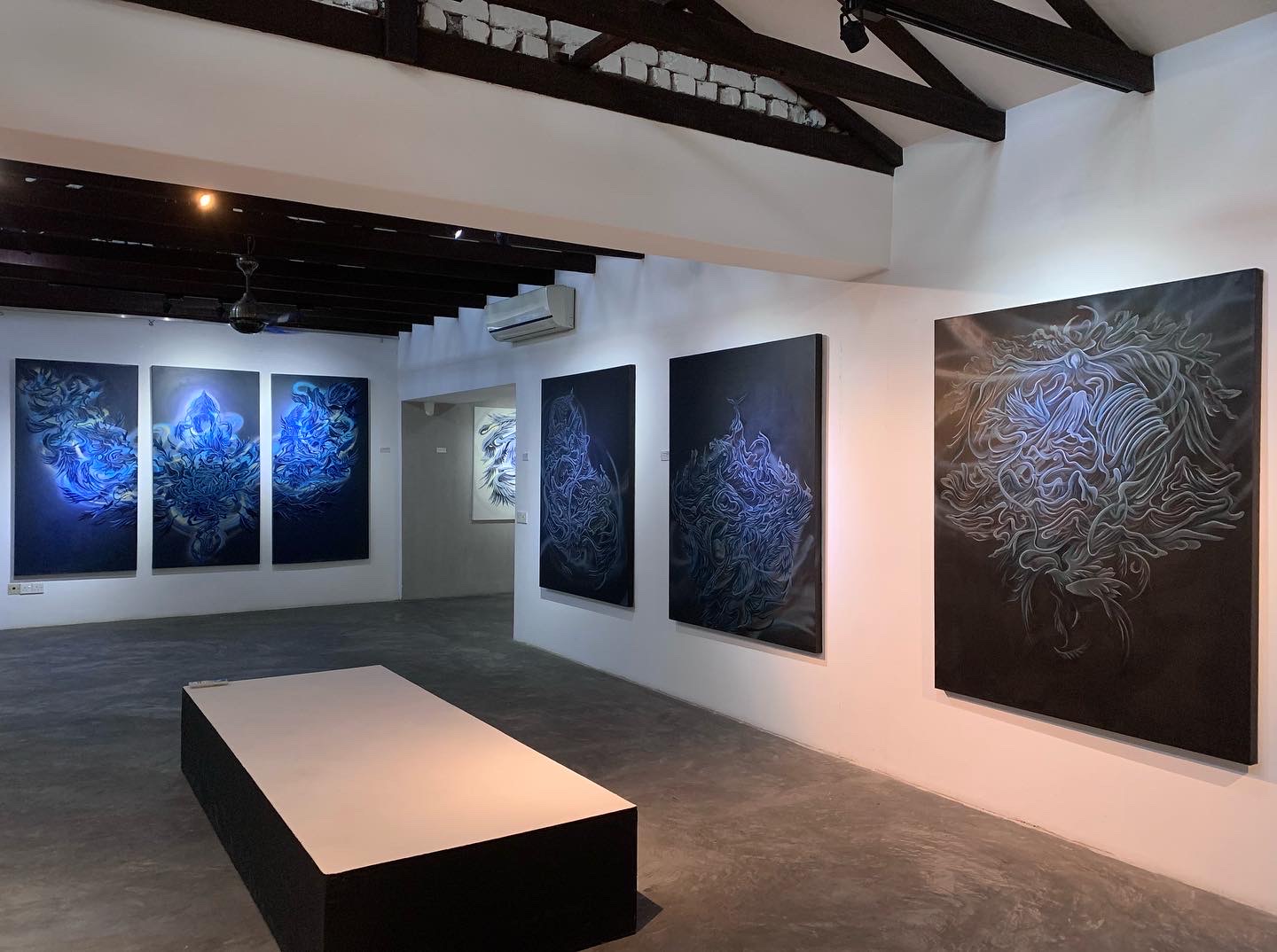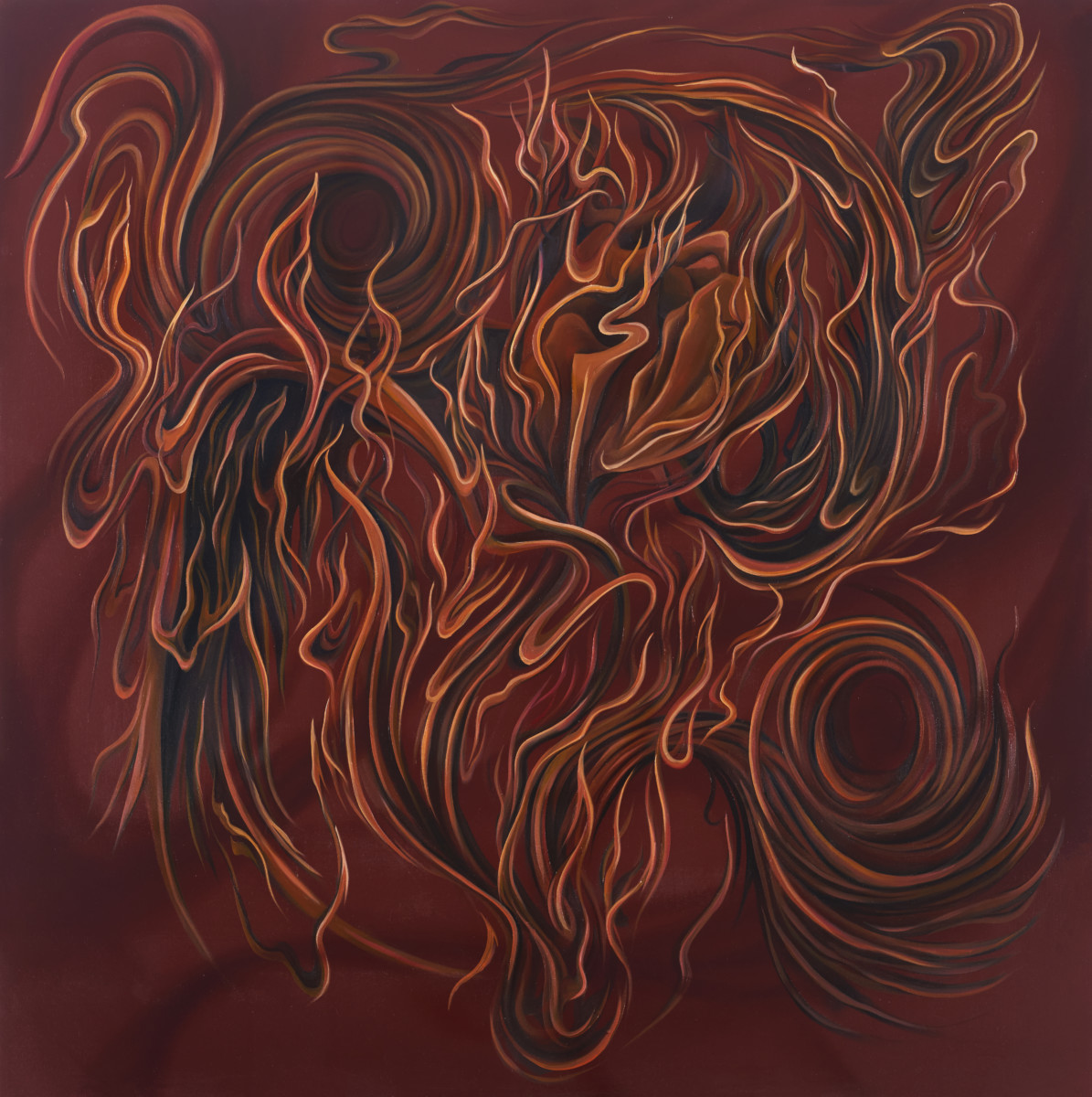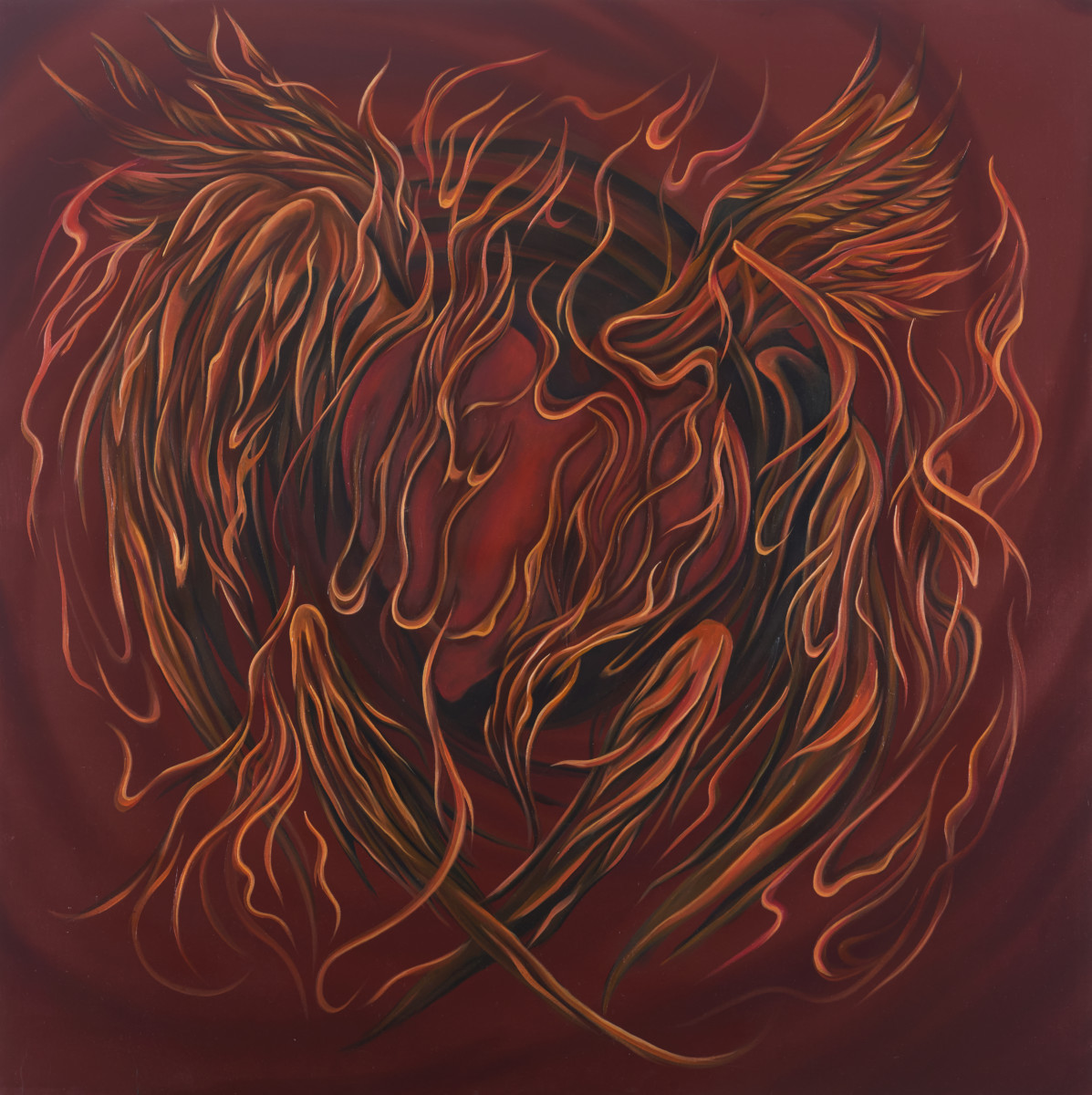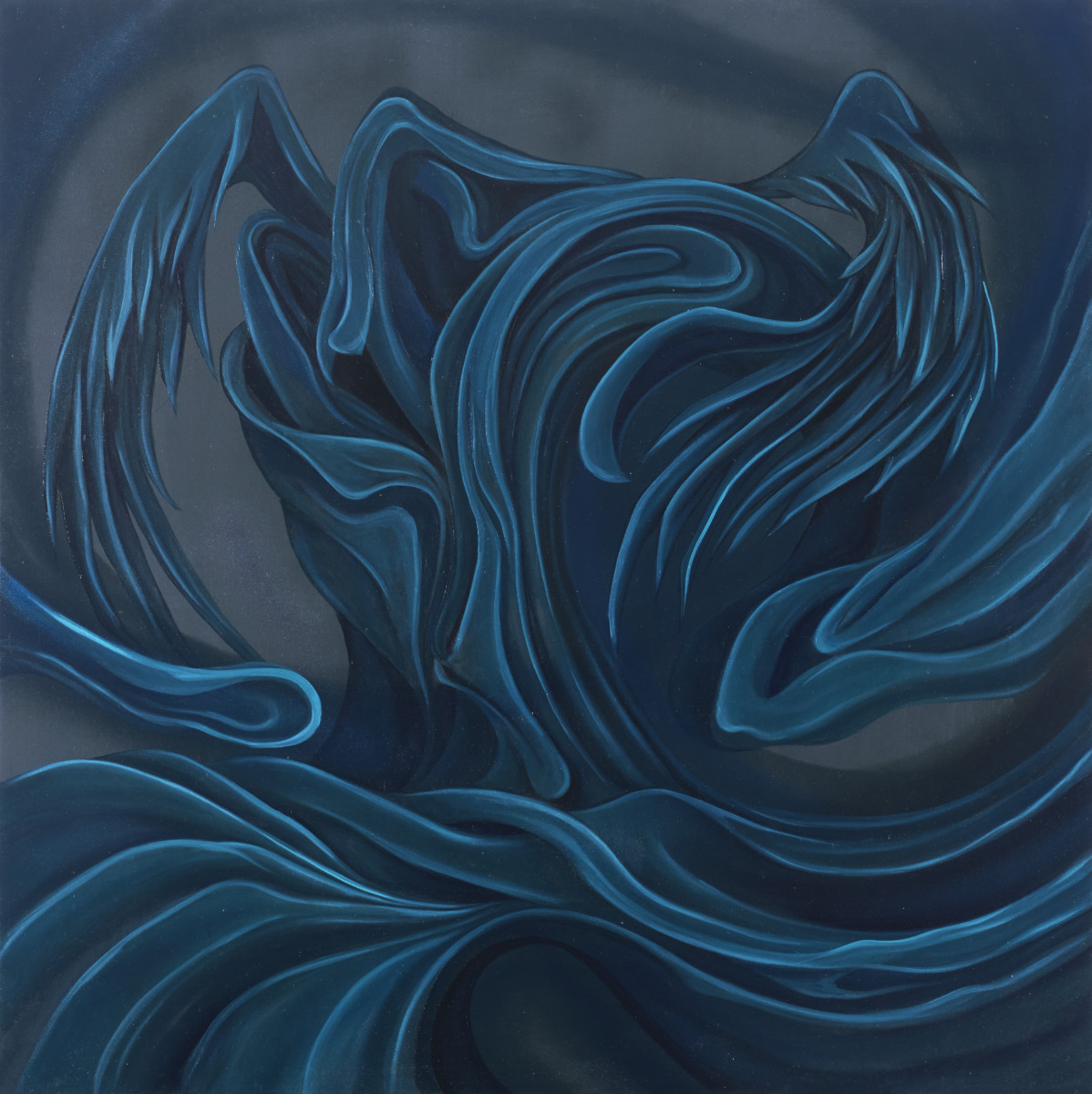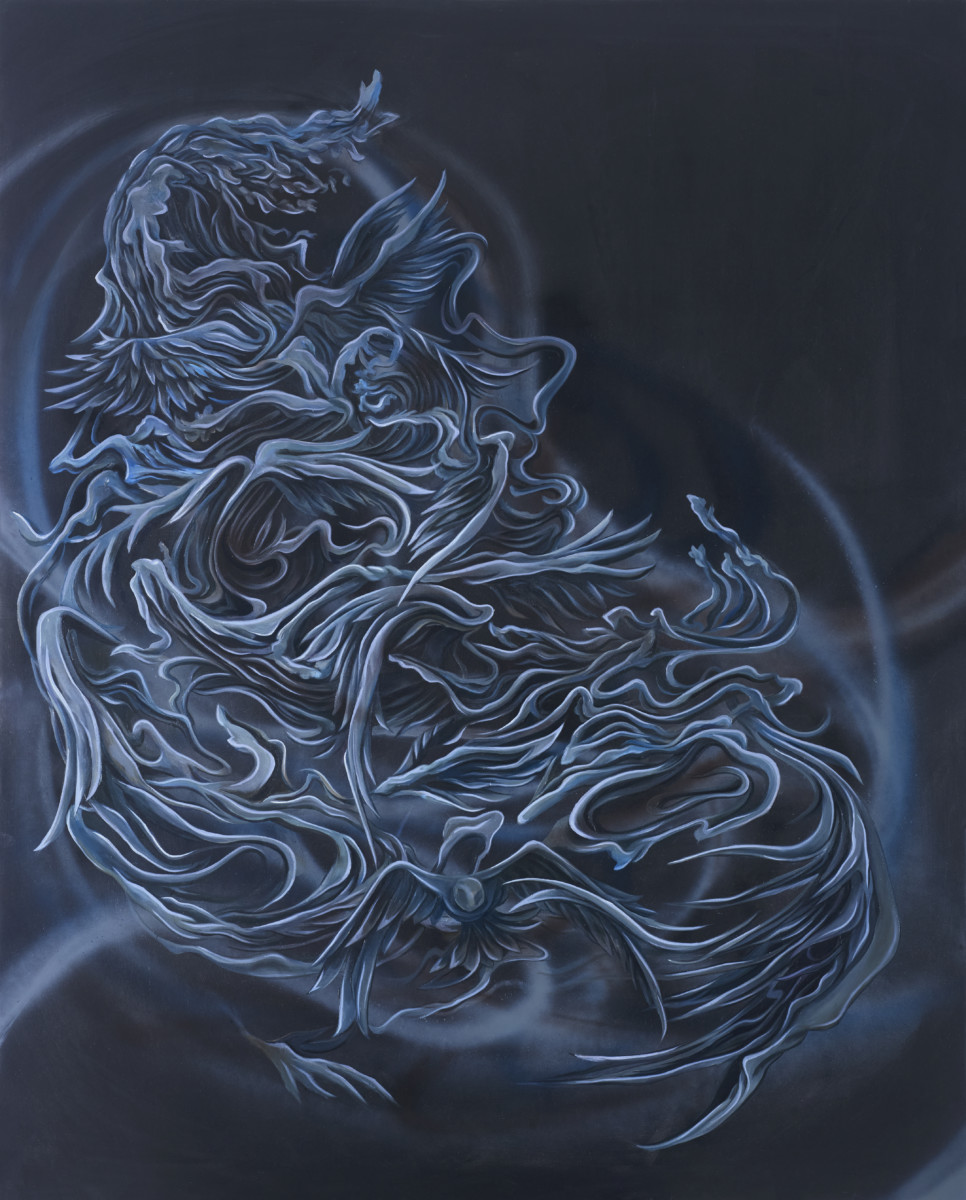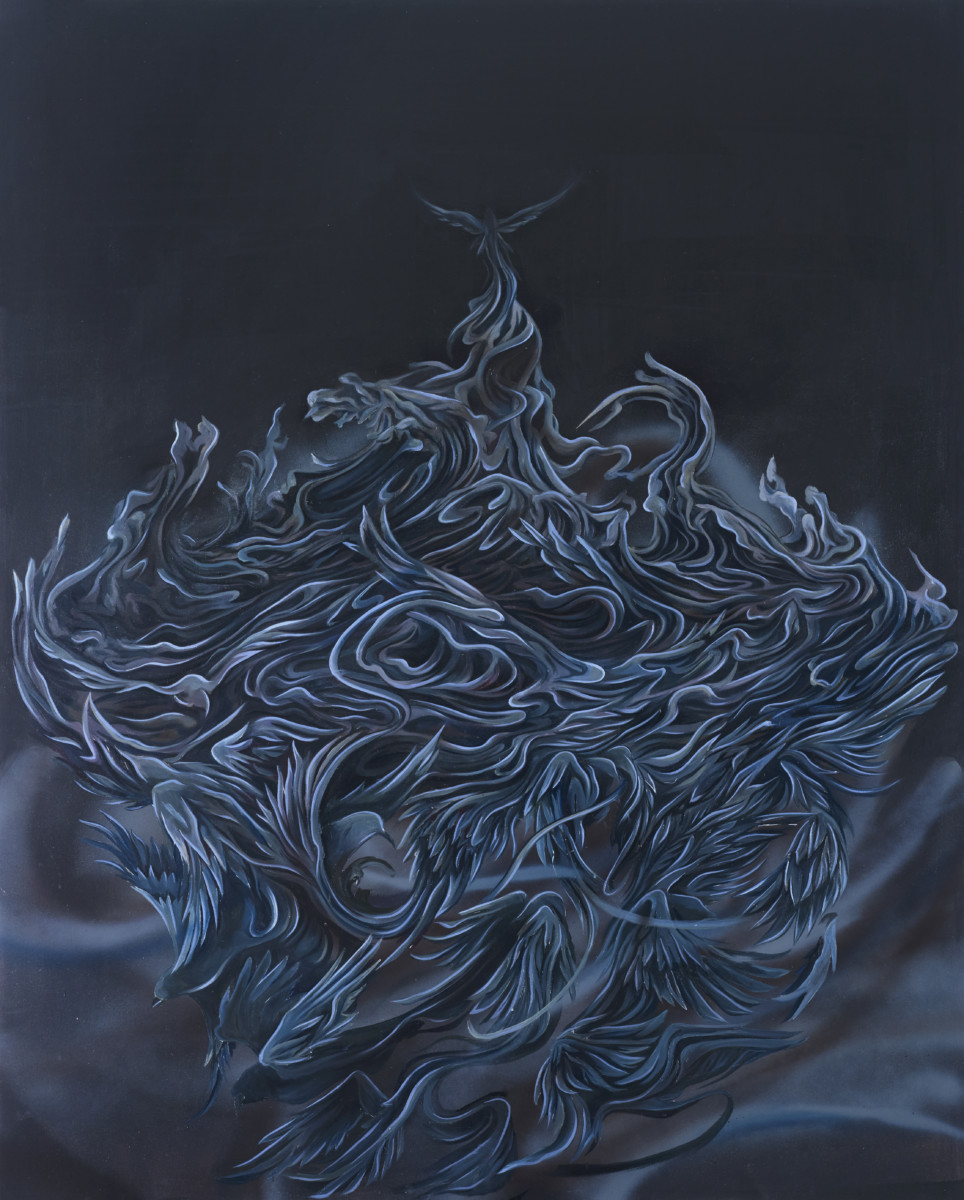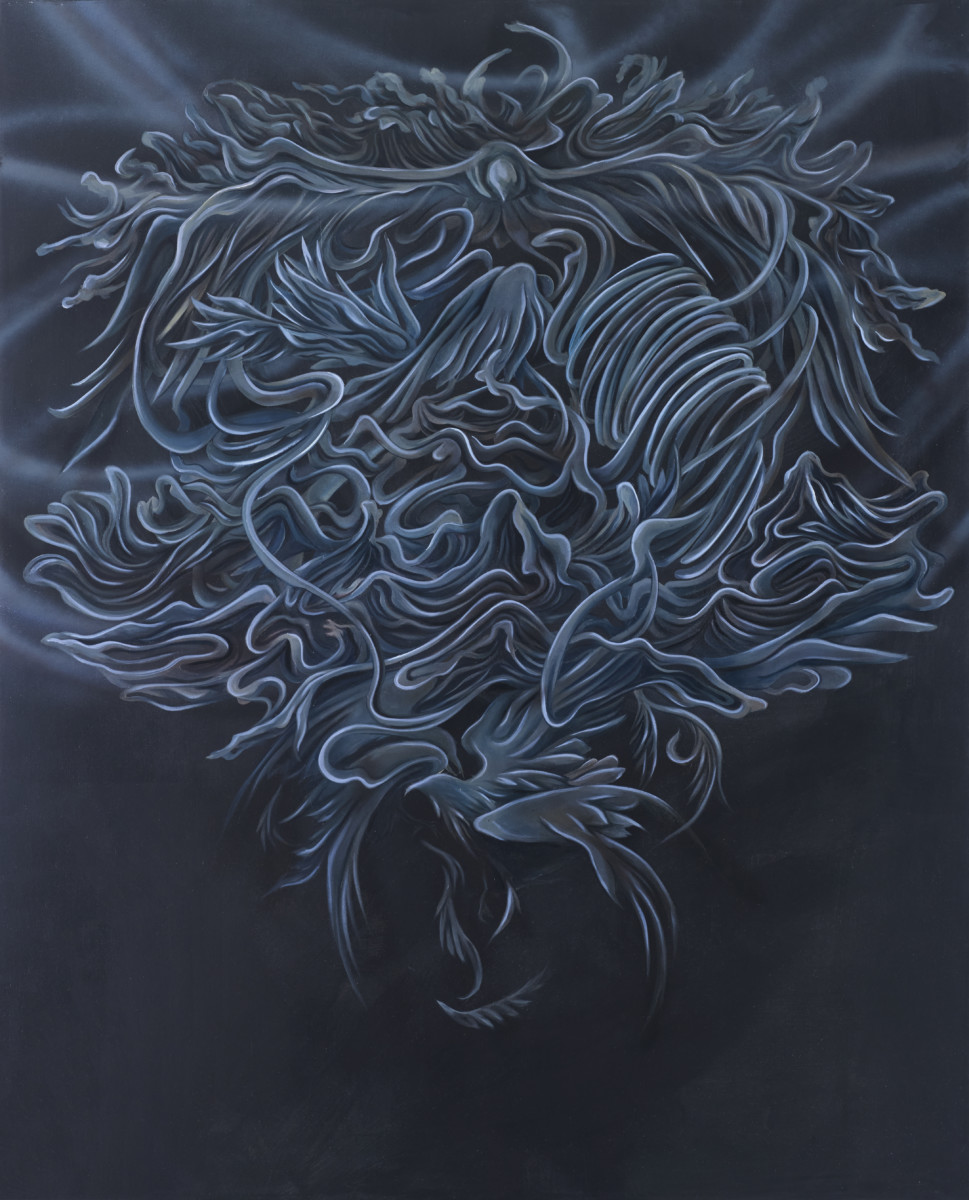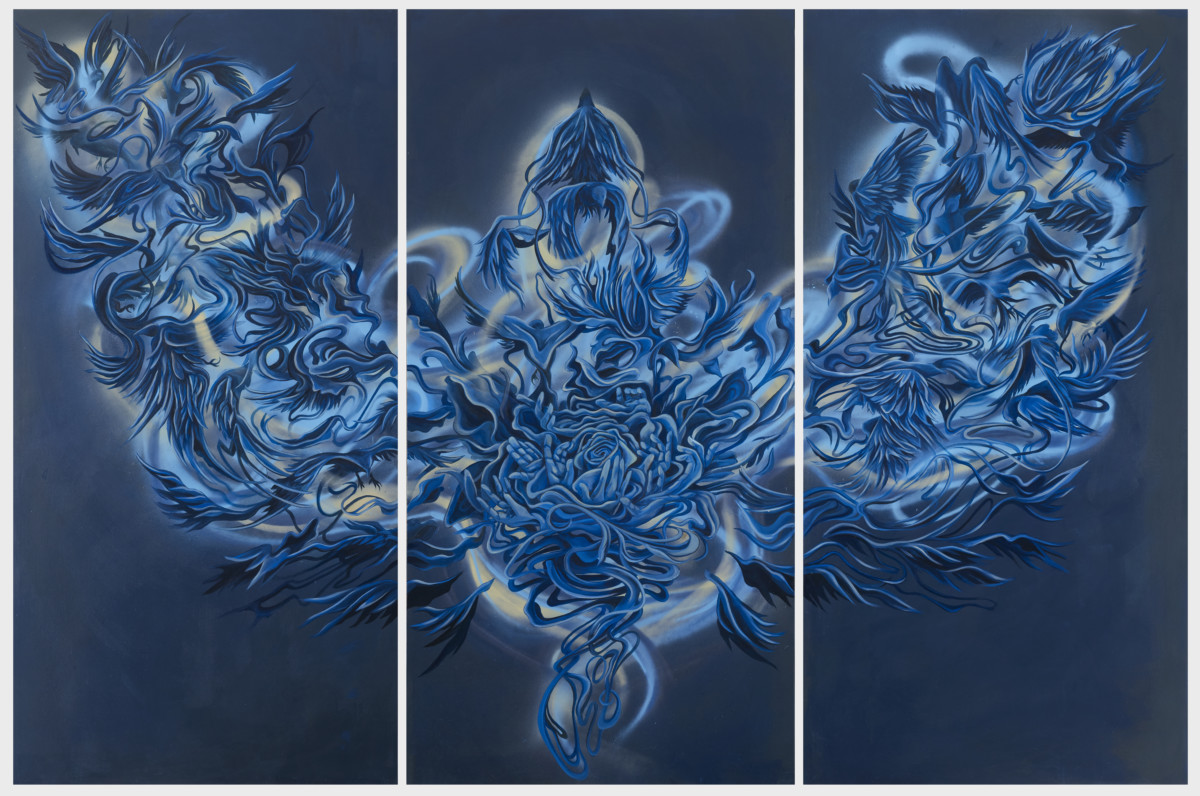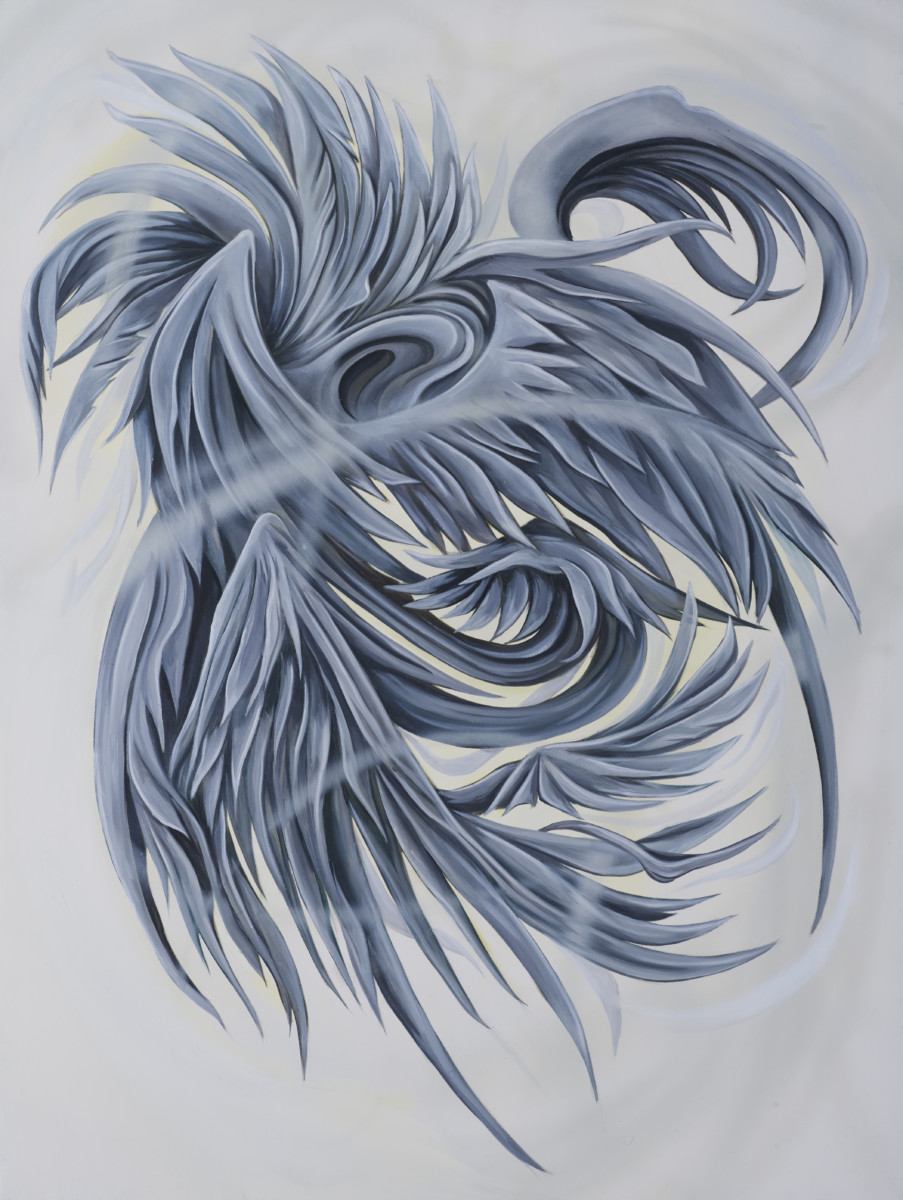Enenra
Solo Exhibition :-
Raden Hisbullah
15th March – 9th April 2022
Platform @ Core,
Core Design Gallery
*Click on images to zoom in
Sight is a given. It is observed that artists, without a doubt, rely on sight the most. John Berger mentioned in his book Ways Of Seeing that seeing comes before words. It is seeing which establishes our place in the surrounding world; we explain that world with words, but words can never undo the fact that we are surrounded by it.
Graduated from UiTM Seri Iskandar, Perak in 2019 with a Bachelor in Fine Arts (Hons), Raden Hisbullah is an artist who works within the confined — figuratively speaking. Following his 2016 diploma in fine arts graduation, he has joined in numerous exhibitions in several local galleries since 2016, gaining recognition for his distinctive style of painting. Additionally, he also entered major art competitions such as Art Against Aids, Karex and UOB Painting of the Year, and for his efforts has won the Emerging Artist Category award for it.
While imagination sometimes triumphed over what we usually see normally, what we eventually processed in our thoughts, on the other hand, could always mean the opposite.
It is worth noting that regarding his works, the recurring irregularities of forms are always a deliberate choice. as emphasised by a scholar below:
Form is limitless. it is a state of pure possibility until it is defined. Form exists in an oppositional relationship with formlessness. The dissolution of form is not only a powerful compositional device but is also metaphorically potent. Form accommodates a need to embody an idea or a perception. Formlessness challenges that very need and questions our sense of the immutability of things as we know them. Form is a vessel. It can be open or closed.
— Kit White, 101 things to learn in art school
The key understanding of ‘forms’ in this exhibition is not only paving the path to merely an abstracted world; It is, to Raden, a world of the unseen, imperceptible and unlikely to be understandable to the naked eye. Raden is keen on his interest in the supernatural, its fantastical aspects of storytellings, tales or events, that at some point in history was prevalent in various cultures and religions.
There is a sense of logic to it that surpass the idea of normativity, perhaps — obviously, we are the epitome of the contemporary. We have been living in a digitised age for decades that reverting to the old mystic way of life seems regressive, if not strange. Then again, we are most wondrous about the limitless possibilities of perceiving imperceivable things.
Raden has largely exemplified in how he predominantly works with the imagination (read: imperceivable) that looks within his spiritual self. He accentuates his belief with his religious upbringing or his spiritual inclination by always relating it to his artmaking. A spark of interest he is reminded of initially is of a yokai, loosely translated as supernatural beings or a bakemono (‘changing thing’, monsters, or shape-shifters) that appears as wisps of smoke that comes from the bonfires, called Enenra.
Enenra was an invention — a creation by way of imagination by Toriyama Sekien who was inspired by the way billowing smokes were forming the likeliness of a human that appears and disappears at its own will. Its characteristics mesmerise those who upon chance, had witnessed it. It was associated with hell and fire for its appearance, but instead of suggesting the spirit of the smoke itself, Enenra might as well be the spirits of the dead. for this particular reasoning, it was told that it will only appear before those who are calm and only a pure of heart and mind.
Raden is intrigued with the core characteristic of the spirit, which is the smoke itself. He is reminded that in Islam, there are significant examples of how the element describes a certain way of feeling that has existed and been ingrained in humans since the dawn of time, which is fitrah. Raden aspires to recontextualise this element to suit the need of the people of current times — as well as to suit his own need as a practising muslim who seeks inner peace more than anything else.
He demonstrates this understanding by way of using the concept of smoke that which the winds carry as something fragile yet brings tranquillity to his person. When it comes to artmaking itself, Raden places special importance on the state of peace while creating. He weighs on the idea of winds as inward turbulence that we can control if we let ourselves do so. This is especially accentuated in the Quran verses he took inspiration from that speak of peace as starting from the inside.
Selepas Menggapai Nafas is borrowed from Haafiz Shahimi’s work in 2013, Menggapai Nafas, which was an afterthought of the content that speaks of rage and inner turmoil. Raden’s remembrance of this particular work is to reflect on it with the opposite, carrying images such as flowers and birds to ‘soothe’ the soul instead. Naturally, he brings more elements of nature to highlights his intention.
Debur gelombang rahsia samudera, bertaut di bali sayap, turunnya desir jumantara and bara senandika all have specific inclusion of key earth elements — water, air, wind and fire — that was the cornerstone for philosophy, science and medicine for thousands of years. Because we are perpetually surrounded by these elements, it is not strange to understand Raden’s attempt in achieving solace in nature that mirrors back to his own artworks.
Enenra is an exhibition that calls for the calmness of the mind. Marking this as his first solo, Raden Hisbullah is fast becoming a young emerging artist that one should not miss out on.

